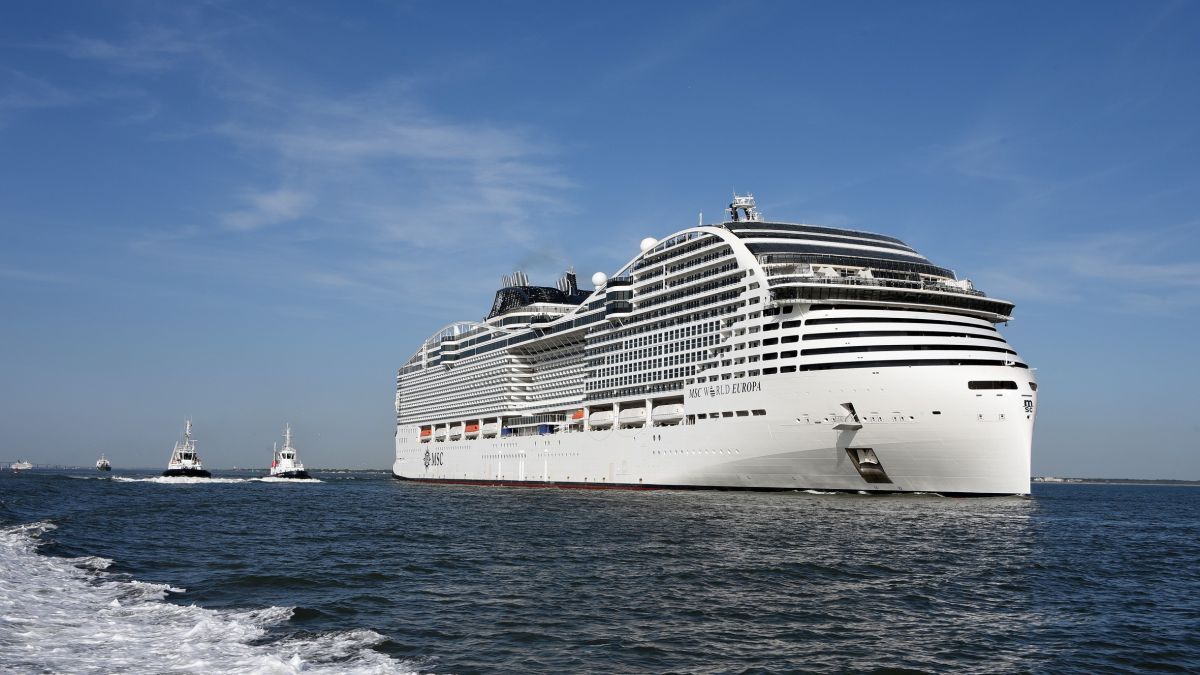How MSC Cruises’ newest ship is leading the charge for alternative fuels, including the first use of an LNG-powered fuel cell in a cruise ship
MSC Cruises’ MSC World Europa is the world’s largest LNG-powered cruise ship – and this will be the first time an LNG-powered fuel cell has ever been used on a cruise ship.
215,863-gt MSC World Europa is MSC Cruises’ first LNG-powered ship. Its christening will take place 13 November in Doha, the capital of Qatar, where it will officially inaugurate the Port of Doha’s new Grand Cruise Terminal.
The announcement is part of MSC’s overall commitment to Qatar and the continued importance of the Middle East, and supports Qatar’s Vision 2030 pledge to triple the number of international tourists visiting the country by that year.
MSC Group cruise division executive chairman Pierfrancesco Vago said, “This event marks the coming into service of the highly anticipated MSC World Europa, the first in our trailblazing World-class of ships that introduces a completely new cruising platform that boasts future-proof marine and onboard hospitality technologies, state-of-the-art environmental technologies and a ground-breaking,ultramodern design. The ship will become the biggest and most environmentally high-performing passenger ship to sail out of Doha and across the Middle East and welcome guests from around the world for the winter /2023 season.”
LNG and onwards
MSC Cruises vice president sustainability and environment, social and governance Linden Coppell tells PST, “We chose LNG as it is the cleanest marine fuel currently available at scale, a transitional fuel as we look ahead to source and use synthetic or bioLNG as it becomes commercially available.
“Designing our first LNG-powered vessel with very different bunkering requirements was part of a project that lasted more than four years and required extensive collaboration with builders Chantiers de l’Atlantique in Saint-Nazaire, France, the engine providers, and thousands of hours of training for those on board and at ports.”
MSC World Europa is fitted with five Wärtsilä 14V 46F dual-fuel engines that can use LNG and MGO. The ship is fitted with two type C LNG containment tanks, each 2,200 m3.
Ms Coppell explains ship-to-ship bunkering has been selected as the main refuelling method with LNG bunker vessels going alongside MSC World Europa. “Truck-to-ship is also possible if needed, and that will depend on the quantity of LNG to be bunkered,” she adds.
Highlighting the considerations, she says, “The overall delivery system methods are similar to traditional fuels, but there are completely different design requirements for LNG bunkering. Also, a bunker ship that delivers MGO, for example, cannot carry LNG, or vice versa as these ships or trucks are specific to the type of fuel being delivered.”
Enter SOFC
MSC World Europa will be the world’s first contemporary cruise vessel to feature brand new solid oxide fuel cell (SOFC) technology powered by LNG. A 50-kW demonstrator system incorporates SOFC technology and will use LNG to produce electricity and heat on board “in a highly efficient way by means of an electrochemical reaction”.
Ms Coppell adds, “This will be the first time an LNG-powered fuel cell has ever been used on a cruise ship. We anticipate SOFC will reduce emissions of greenhouse gases substantially compared with a conventional LNG engine without producing emissions of nitrogen oxides, sulphur oxides or fine particles.”
It also has the advantage of not only being compatible with LNG, but also with potential new sources of low-carbon fuels such as green methanol, ammonia and hydrogen. “We could in future transition to bio-synthetic LNG,” says Ms Coppell.
Highlighting environmentally friendly and energy-efficient technology used on the ship, she says, “We can describe our ships as self-contained towns. We have the technology on board to produce our own water for drinking, cooking, cleaning and swimming pools using on board desalination.”
MSC World Europa has an advanced wastewater treatment system capable of meeting the highest standards for wastewater, cleaning all the wastewater produced on board to close to tap water standards before it leaves the ship.
Indeed, Ms Coppell says, “We have an entire team dedicated to implementing strict waste management protocols who separate waste seven separate ways, for example, glass, aluminum and paper, with specialised equipment to crush or bundle this waste in the ship’s waste management facility.”
Energy efficiency is a priority throughout the ship, with LED lights throughout and high-efficiency heating and ventilation systems to ensure waste heat is transferred from places such as the enginerooms to where it is needed.
MSC World Europa will also feature Tier III selective catalytic reduction systems on all engines, an underwater radiated noise management system to help protect marine life and like all the operator’s newbuilds, the ship is fitted with shore power capability, allowing it to plug in to power at ports with a cold ironing capability and allow all internal power sources to be switched off.
Moving on to the interiors of the ship, MSC World Europa’s ‘firsts’ include a micro brewery, gin bar, healthy juice bar, coffee emporium and tea house. The ship has 13 different dining options including two new specialty restaurants: La Pescaderia will offer fresh seafood and Chef’s Garden Kitchen will dish up seasonal farm-to-ocean cooking.
Passengers can also look forward to The Venom Drop @ The Spiral, the longest at sea dry slide that spans 11 decks, MSC Cruise’ largest waterpark in its fleet and for the first time, bumper cars.
Seven of the ship’s 19 types of passenger cabin are new to the MSC Cruises’ fleet.






